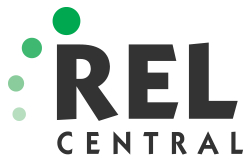The COVID-19 pandemic has led to unprecedented levels of social distancing being practiced throughout the country. This in turn has resulted in a large number of schools nationwide having to implement distance learning programs in order to complete the academic year.
Unfortunately, access to high-speed broadband internet, and in some cases the internet in general, is inconsistent throughout America even in 2020. A relatively high percentage of students, particularly in rural areas, continue to have limited access to online resources, making remote learning challenging.
Therefore, developing strategies for implementing remote learning programs with the consideration of internet access has emerged as a hot button issue among education professionals in recent weeks. There is currently a range of strategies encompassing a wide spectrum – fully online, a combination of online/offline activities, and purely offline – being practiced and getting ready to be practiced in remote learning at the moment and for the foreseeable future.

Strategies for Implementing Remote Learning Plans Along a Continuum of Internet Access
This REL Central handout highlights four elements of remote learning: infrastructure, instructional supports, student supports, and parent/guardian supports. Strategies from all four of these elements, with a primary focus on infrastructure, were discussed during a recent quick chat we held on remote learning in which select education stakeholders shared their respective strategies for bridging the “digital divide” and empowering as many students as possible to actively engage in distance learning.
“We’ve been working diligently to get those students connected that don’t have internet for whatever reason,” said Andrew Moore, chief information officer of the Boulder Valley School District, which serves more than 31,000 students in Boulder, Colorado – a total that includes students living in the city as well as mountain towns and suburban areas. “We signed a contract with Comcast so that the district could pick up the cost for those students that couldn’t afford or the families of those students that couldn’t afford internet.”
Boulder Valley was also able to procure both T-Mobile and Verizon hotspots for students without internet access. “We were able to deploy those to students who are in their coverage areas,” Moore said.
Morris Lyon, superintendent of the Hawkins Independent School District, a rural district in Texas serving 750 students from prekindergarten to grade 12, likewise strove to improve internet access for as many of his area’s learners as possible, which has proven somewhat challenging given the region’s geographic limitations.
“We have a local company in town that has set up a few mobile areas,” said Lyon. “We also have some access here at school. With this access throughout the community, students can drive up and then have mobile access to sit in their cars and work on assignments. So we definitely have implemented the hybrid approach.”
Maintaining contact between educators and students has also been a priority in Hawkins.
“Research says that the teacher has the greatest impact on student learning,” said Lyon. “So we are certainly trying to have our teachers reach all of our students through the internet, and those students who can’t get internet can call in on the phone. I think it’s very important, especially in this time we’re in, that our students can hear their teacher’s voice.”
In addition to using good old-fashioned telephone conversations to keep students engaged during the COVID-19 pandemic, Hawkins is also using other forms of analog communication to maintain educational standards.
“We’re mailing out [educational] packets,” said Lyon. “We also have the ability for people to drive up on campus and drop their work in a bin. So all those things, from the first thing on the spectrum to the last, we’re implementing in some measure because we want to make sure that all our kids have access.”
Moore and Lyon go into further detail on several of these topics and also discuss subjects such as digital teacher development, English language learning, and more in the recent REL Central webinar hosted by yours truly: Strategies to Support Remote Learning Along a Continuum of Internet Access. You can watch the webinar in its entirety HERE.





